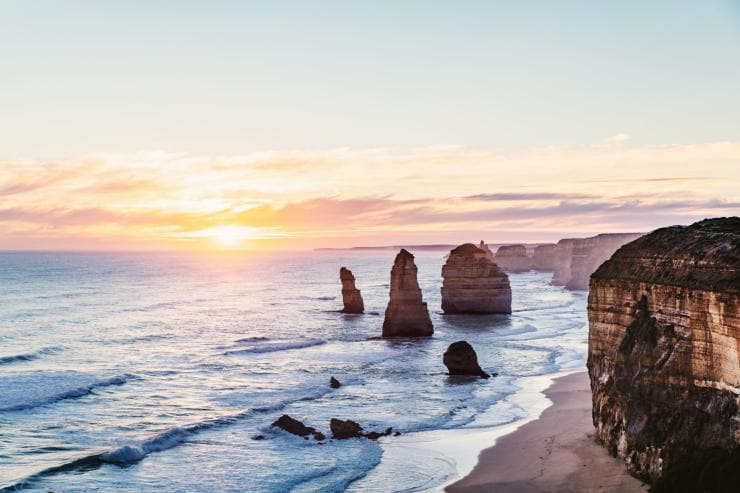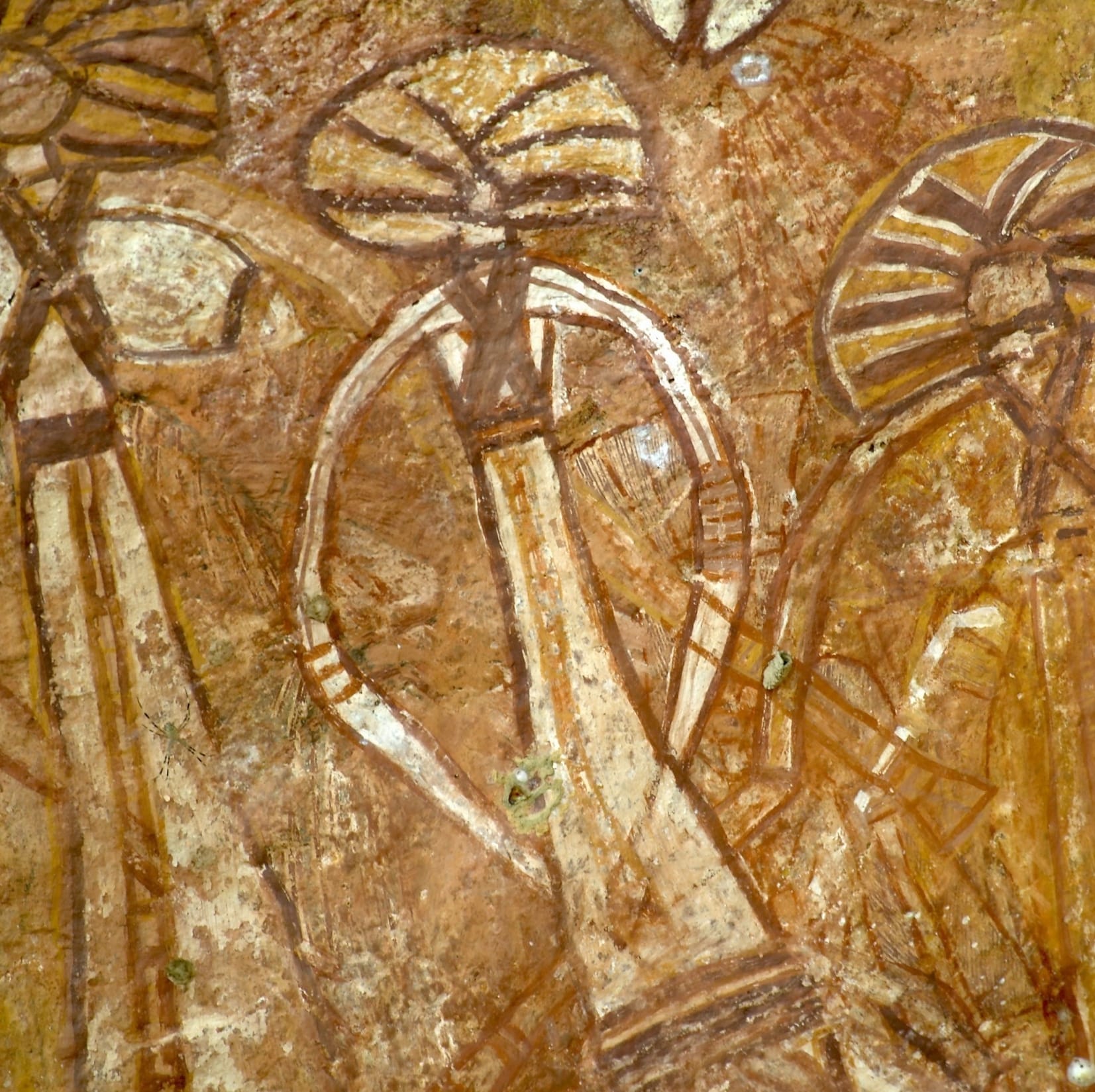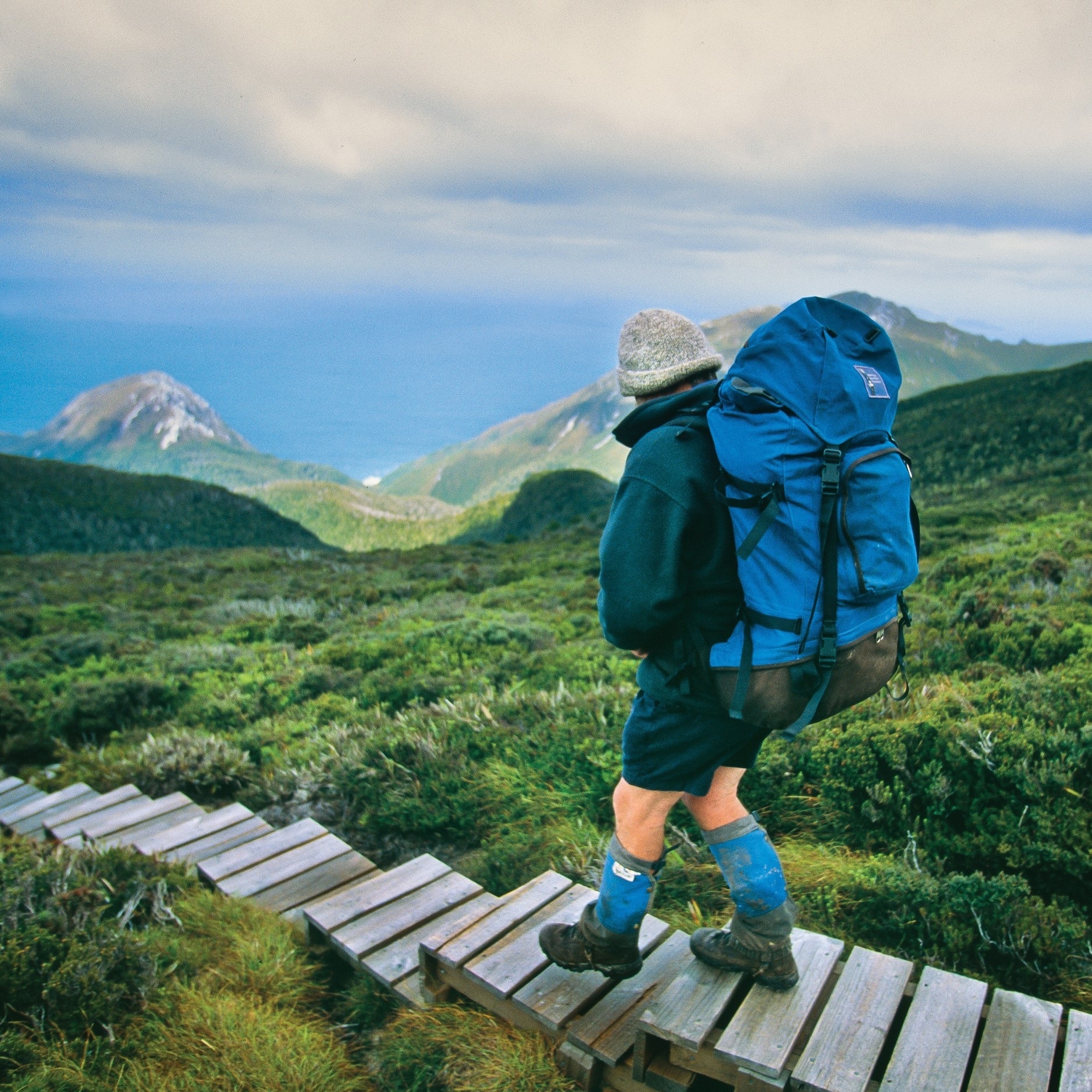
Pinnacles, Nambung National Park, WA © Tourism Western Australia/David Kirkland
7 meaningful family holidays to start planning now
From helping wildlife to making discoveries side-by-side, these holiday ideas will bring every member of your family together.
By Tatyana Leonov
Taking the whole family on an Australian adventure can be a wonderful opportunity to connect with each other – as well as the places you visit and the people you meet. Whether it’s learning about prehistoric times on the trail of dinosaurs or discovering the rich depths of Aboriginal culture, these shared experiences will bring your loved ones together while providing meaningful travel memories.
Read Next
7 great holiday ideas for the conscious traveller
1. Get the whole family to help Australian wildlife
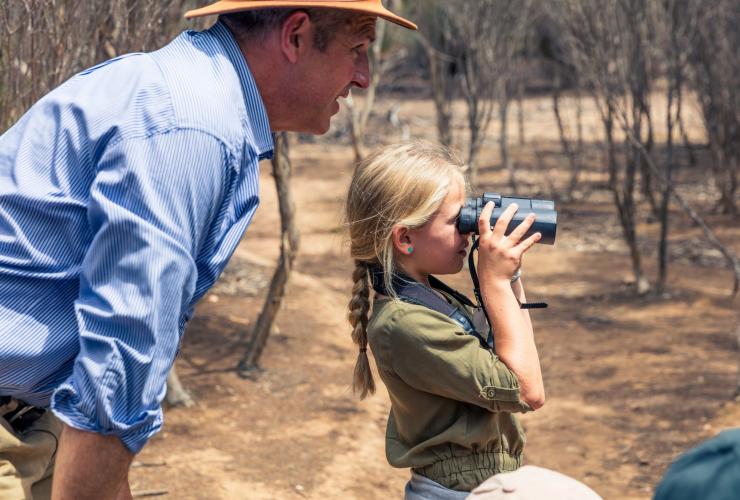
Exceptional Kangaroo Island, Kangaroo Island, South Australia © South Australia Tourism Commission
You can do more than just admire animals from afar on South Australia’s Kangaroo Island. Ecotourism operator Exceptional Kangaroo Island links groups with educational programs that make a difference.
Take a bushwalk with wildlife researcher Dr Peggy Rismiller, looking for signs of echidnas and learning about them along the way. Or swim alongside dolphins while helping a research team monitor dolphin pods. Back on land, look for glossy black cockatoos, checking for nesting hollows and learning about what’s needed to safeguard their long-term survival.
Whatever educational activity you choose to do on Kangaroo Island, you’ll be sure to learn much about Australia’s unique animals – and the interconnectedness of life – together as a family unit. The experience may even inspire the whole family to support wildlife conservation efforts closer to home as well.
2. Connect with ancient culture at Uluru

Maruku Arts, Uluru-Kata Tjuta National Park, Northern Territory © Tourism NT/Archie Sartracom
Uluru, in the heart of the Northern Territory, is the world’s largest monolith, and holds great cultural significance for the Anangu Aboriginal people, the traditional owners of the land.
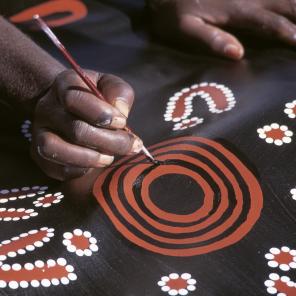
There’s no better place for the whole family to learn about aspects of the Aboriginal customs and lore that form the basis of the oldest living culture in the world.
Take your family on the 10-kilometre (six-mile) walk around Uluru, stopping to admire ancient rock art and visit caves, some of which were used by the Mala people, the ancestors of the Anangu people. Just about every experience here – from guided tours to dot painting workshops – offers the opportunity to discover the Anangu people’s rich and ancient culture. There are valuable lessons for everyone as you encounter a very different way of connecting to the land.
3. Bond on a scenic road trip

Cape Otway Lighthouse, Great Ocean Road, Victoria © Visit Victoria

Local tip
Be prepared to stop regularly as you near the famous 12 Apostles, as every passenger in the car will be requesting photo breaks to document a journey you’ll all talk about together for years to come.
Spanning 243 kilometres (151 miles), Victoria’s Great Ocean Road is all about enjoying coastal views and local hospitality, and taking time out of busy lives to bond as a family.
Get among the surfing action in Torquay (the eastern start or end point of the drive); it’s a great opportunity to teach the kids the Australian way of body surfing (or riding waves closer to shore without needing a board). Stop and recharge in enchanting towns such as Port Campbell, Timboon and Curdievale, get to know the locals and experience the charms of small-town life. Take a 25-metre (82-feet) high walkway through the ancient rainforest terrain of Otway National Park, and even the most chatty member of the family will fall silent in awe.
4. Make a Kakadu waterhole your own for the day

Maguk, Kakadu National Park, Northern Territory © Tourism NT/Kyle Hunter & Hayley Anderson
Travel tip
Seek out the ancient Burrungkuy rock art site, home to rock art masterpieces that are up to 20,000 years old, while in Kakadu National Park.

The UNESCO World Heritage-listed Kakadu National Park, a three-hour drive east of Darwin in the Northern Territory, is a wonderland of rugged outback terrain with plenty of wildlife to see and Aboriginal cultural sites to explore.
If you visit Kakadu on a warmer day, delight the kids by taking them to one of the park’s waterfalls and waterholes for surely the most spectacular swimming experience in Australia. Maguk natural waterfall and plunge pool requires a four-wheel-drive vehicle, but if you can manage it, you'll be rewarded with clear waters and secluded swimming.
Moline Rockhole is a lesser-known gem, and you might find it’s just your brood enjoying the waterfall and swimming hole.
Whichever spot you take a dip in at Kakadu, you’ll be entering a culturally significant place that the traditional Aboriginal owners of the land are sharing with you. Reminding the kids that they need to swim here in a respectful way will teach them a valuable lesson in how different cultures connect with the land they call home.
5. Learn about dinosaurs and explore Outback Queensland

Australia’s Dinosaur Trail, Winton, Queensland © Tourism and Events Queensland
Step back in time and take the kids on a dinosaur trail through Outback Queensland, an area that was once part of an inland sea. Today the region is home to a diverse collection of dinosaur and megafauna fossil deposits, stretching all the way from Mount Isa (a 12-hour drive or two-hour flight south-west of Cairns) to Eromanga (a 12-hour drive further south).
Visit Winton, Hughenden and Richmond – the three towns that make up Australia’s Dinosaur Trail – and come face to face with life-sized model dinosaurs. You can also join a fossil technician program and see fossilised dinosaur footprints. Besides learning more about the ferocious creatures that once roamed Australia, you’ll encounter a different way of living as you meet the locals that call the outback home.
6. Witness a natural phenomenon on Christmas Island

Annual red crab migration, Christmas Island © Christmas Island Tourism Association
Christmas Island’s annual red crab migration occurs sometime between October and December (each year is slightly different). Plan a trip to see it and the whole family will never forget how they witnessed one of the most remarkable wildlife events on the planet. There’s no better reminder of the mystery and majesty of the animal kingdom, and one that will help each member of the family put their own place on Earth in perspective.
The crabs keep out of the sun for most of the year, but early in the wet season tens of millions of these crustaceans begin their mass migration to the ocean to spawn, transforming the usually blue waters into a mass of red. Make sure everyone has charged phones and cameras to capture this extraordinary phenomenon.
7. Connect with the Tasmanian wilderness, and each other

Par Avion Wilderness Camp, Southwest National Park, Tasmania © Par Avion/Paul Fleming
Tell the kids you’re “going bush” (heading out to the country) in style. Tasmania’s rugged south-west feels a world away from everyday life. Once you ditch the WiFi and go beyond phone reception coverage you’ll have the opportunity to reconnect with one another free of distractions, while also experiencing an untouched corner of Australia together.
Families of up to five can book out a Par Avion flight from Hobart to the abandoned tin-mining settlement of Melaleuca for a one-day private tour of the waterways of this spectacular region. Or for a longer trip, head out on a three-day Southwest Wilderness Camp into the untouched wilderness of Southwest National Park, exploring ancient Huon pine forests, rugged mountains and isolated islands, with optional walks for the more energetic members of your family.





























































































































